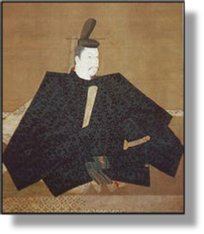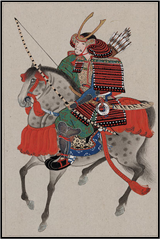


JAPAN -
Including:
The Samurai

xxxxxAs we have seen (1156 H2), following the victory of the Minamoto family in the Japanese civil war, the new leader was Yoritomo. In 1192 he introduced the shogunate system whereby hereditary lords (shoguns) governed the country and the Emperor became a figurehead -
 xxxxxAs we have seen (1156 H2), the Minamoto family gained a decisive victory over the Taira family during the civil war which dominated Japanese politics throughout the reign of Henry II. Thexleader who emerged from the conflict, Minamoto Yoritomo (1147-
xxxxxAs we have seen (1156 H2), the Minamoto family gained a decisive victory over the Taira family during the civil war which dominated Japanese politics throughout the reign of Henry II. Thexleader who emerged from the conflict, Minamoto Yoritomo (1147-

xxxxxThe military backbone of this new political order was provided by the military caste known as the Samurai, whose families made up about seven to eight percent of the population. They followed a strict code of honour (known as the bukshido or Way of the Warrior) and were obliged to carry out specific duties in return for social privileges. Under Yoritomo a rank system was introduced by which the military were divided into the vassals, mounted samurai and foot soldiers. The Samurai remained an important and essential element in the shogunate system, but in the seventeenth century their role became less militaristic and many became government administrators.
Acknowledgements
Yoritomo: alleged portrait by the Japanese artist Fujiwara Takanobu (1142-
R1-


